循环制造即将变成现实:苹果计划拆解旧iPhone,用于生产新品
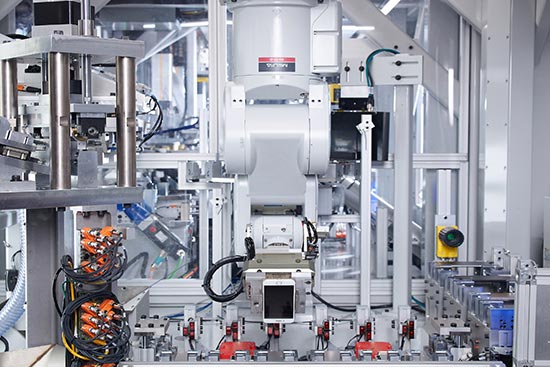
|
在奥斯汀的一个工业园区里,藏着一栋没有任何标志的建筑,你甚至在苹果地图上都找不到这个地方。然而在这里,苹果公司的一个采用了最新技术的机器人正在热火朝天地工作着。只见在一个玻璃罩子里,几条自动机械臂正在围着一条传送带快速而精准地上下左右挥舞着。玻璃罩内的温度可低至零下112度,机械臂在这种极低温度下作业,使它的周边升起了一团雾气。几名穿着蓝色实验服、头戴护目镜的技术人员在旁边观察着机械臂的工作情况。除了机器运转时发出的低沉的嗡嗡声,还不时传来机械敲击的砰砰声。 这套复杂的系统名叫Daisy,它结合了人力指令和自动技术,给苹果带来了它一直孜孜以求的结果——从报废的iPhone上拆解塑料、金属和玻璃,用于二次利用。苹果的环境政策和社会事务副总裁丽莎·杰克逊表示:“我们在工程上花了很多时间,以确保我们的设备能够运转起来。研发Daisy的目的,就是确保我们可以有一种有效且高效的方法来拆解产品。” |
In an unmarked building tucked away in an industrial park in Austin, a location so secret it doesn’t appear on Apple Maps, one of Apple’s latest technologies is hard at work. Inside glass casing, automatic robotic arms move left, right, up, down, and around a conveyor belt with speed and precision. A couple of technicians in blue lab coats, safety goggles, and gloves watch as fog—created by the glassed-in chamber’s extreme cold, which can drop to –112 degrees—billows around one of the arms. Loud mechanical pounding breaks the low hum of running machinery with a uniform thump, thump, thump. This complicated system, called Daisy, combines automation and a human touch to give Apple its coveted result: scraps of pure plastic, metal, and glass from otherwise-unusable iPhones. “We spend a lot of time in the engineering, making sure our devices stay together,” says Lisa Jackson, Apple’s vice president of environment, policy, and social initiatives. “Daisy was about making sure we had an efficient and effective way to ¬disassemble products.” |
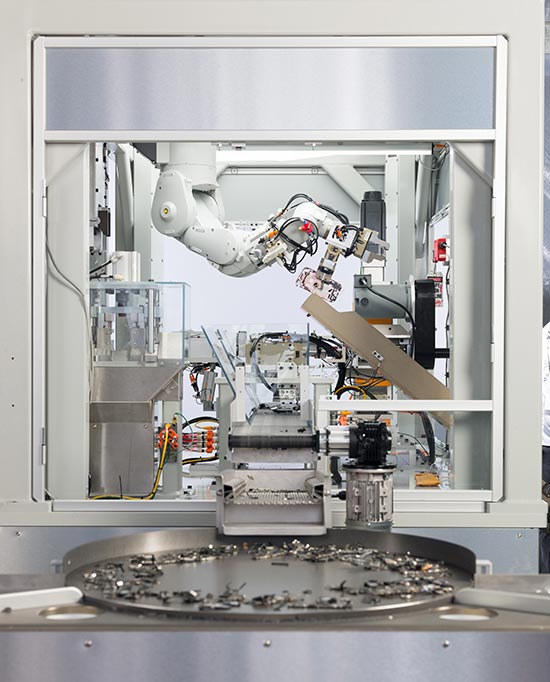
|
作为一个能够将电子设备拆解到极致的机器人,Daisy不仅代表了电子产品回收领域内的一个突破,同时也描绘出了苹果在尽力缩小环境影响上的路线图。苹果对自己在环保领域里的成绩还是颇为自得的。现在,它的供应链中有相当一部分比例使用的是可再生能源。现在,它又把注意力转向了一个同样棘手的问题——数量越来越庞大而且有毒有害的废弃电子设备零件。 苹果在2017年曾经宣称,公司的终极目标,是要使用可回收或可再生材料制造它的全部产品——而且是只使用可回收和可再生材料。不过至于什么时候能实现这个目标,苹果并未给出时间表。(显然不会很快实现。)不过这栋建筑,也就是今年4月刚刚投入使用的苹果材料回收实验室,就是苹果开展相关实验的地方。苹果将从这里起步,一步步朝它的终极目标迈进。 |
Daisy represents not only a breakthrough in electronic recycling efforts—robotically pulling apart an electronic device piece by piece—but also a road map to minimizing environmental impact. Apple prides itself on its green credentials; a high proportion of its supply chain, for example, is powered by renewable energy. Now it’s turning its attention to an equally thorny problem: the fast-growing, often toxic detritus of discarded electronic gear. Apple in 2017 announced a goal of eventually making all of its products from recycled or renewable material—and eventually, only such material. Apple can’t say when that will happen. (It won’t be soon.) But this building, the Material Recovery Lab, which opened in April, is where the company is doing the research that it hopes will get it there. |
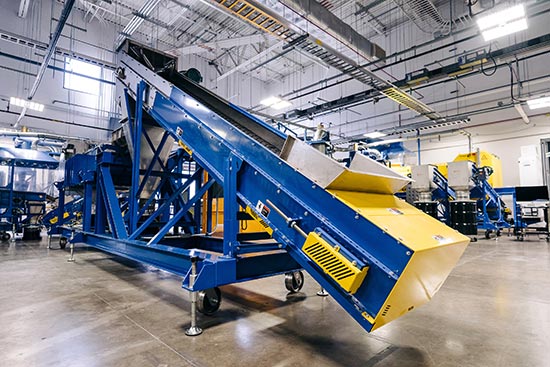
|
电子垃圾涵盖的范围很广,除了报废的手机,还有传真机和智能手表等等。如今,电子垃圾管理已经成为了一个越来越复杂的问题。来自于全球电子垃圾监测机构的数据显示,2016年,全球共产生了4400万吨电子垃圾,足够盖起4500个埃菲尔铁塔。 包括消费电子产品在内的家用电子垃圾,只是电子垃圾总数的一小部分。来自于罗彻斯特理工学院戈利萨诺可持续发展研究所的数据显示,去年全球的家用电子垃圾总量约为160万吨(约合35亿磅)。戈利萨诺可持续发展研究所的副教授卡利·巴比特认为,随着各大科技公司相继推出更小、更精致的电子产品,电子垃圾的总量实际上是在减少的,但同时新的问题也在出现。她表示:“我们现在使用的电子产品,依赖于越来越复杂的稀土材料和贵金属的混合。”而随着企业推出新产品的速度越来越快,就算有了自动化的拆解回收系统,也难以跟上人们丢弃电子垃圾的速度。 |
Managing e-waste, a category that spans thrown-away equipment from fax machines to smartwatches, is becoming an increasingly complex problem. In 2016 the world generated 44 million metric tons of e-waste, according to the Global E-Waste Monitor. For perspective, that’s the equivalent of about 4,500 Eiffel Towers. Household e-waste, including consumer electronics, is a smaller share of the pile; last year it accounted for 1.6 million metric tons, or 3.5 billion pounds, according to the Golisano Institute for Sustainability at Rochester Institute of Technology. Total e-waste mass is actually decreasing as companies release sleeker, smaller products, says Callie Babbitt, associate professor at the Golisano Institute. But there’s a new problem on the rise, she explains: “The products we’re using now are relying on an increasingly complex mix of rare-earth materials and precious metals.” And as companies put out new products at an increasingly rapid pace, even automated systems may struggle to keep up. |

|
苹果公司拒绝估计自己造成的电子垃圾总量。去年苹果一共卖出了2.177亿部iPhone手机,按平均一部手机5盎司的重量估算,这意味着光是通过手机,苹果就向全球消费者输送了大约6800万磅的物料。如果消费者没有更好的回收或者处理方案,很多iPhone最终必然会成为电子垃圾。 杰克逊表示,Daisy代表着苹果公司朝着它的环保目标迈出了“关键的一步”。在加盟苹果前,她曾经担任美国环保署署长一职达五年之久。Daisy于去年正式问世,它可以拆解iPhone 5以上的15款不同型号的iPhone手机,每小时可拆解200台。今年4月以来,苹果通过“以旧换新”计划,已经回收了大约900万台iPhone手机。苹果的两台Daisy机器人(另一台在荷兰)正在拆解回收其中的100万台旧手机。 |
Apple declines to estimate the size of its own e-waste footprint. The company sold 217.7 million iPhones last year: At an average of about five ounces a phone, that means Apple put about 68 million pounds of materials into households worldwide through phones alone, some of which will eventually become waste if consumers lack a better option. Daisy represents a “crucial step” toward Apple’s goals, says Jackson, who spent five years leading the U.S. Environmental Protection Agency before joining Apple. The robot, which debuted last year, can disassemble 15 different iPhone models (from the iPhone 5 up) at a rate of 200 devices per hour. The machine at the Austin lab and another in the Netherlands together are processing about 1 million of the 9 million iPhones collected since April through Apple’s trade-in program. (Most of the others are refurbished and resold.) |
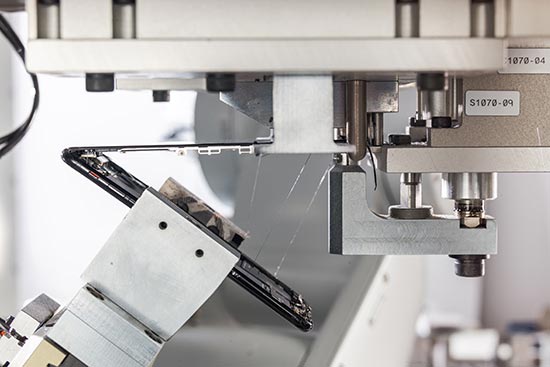
|
苹果公司表示,公司希望最终对产品中使用的14种材料做到完全回收。其中之一是塑料,因为它需要数百年的时间才能够分解,因而会对野生动物构成威胁,而且它在降解的过程中还会释放出有害的毒素。另一种材料是锂,主要使用在可充电电池中,锂矿的开采会对环境造成严重破坏。在Daisy的帮助下,苹果公司已经能够对全部14种材料进行回收利用。目前,它已经开始在MacBook Air等新产品中使用回收的锡和铝等材料。 传统的电子垃圾回收设施并没有Daisy这么考究。大多数工厂主要依赖于笨重的机器将报废产品粉碎,然后将碎片一股脑地倒进一个容器里。这些混合物更加难以回收,而且有些零部件会在这个过程中丢失或者损毁。杰克逊表示,苹果不仅希望改进自己的回收流程,还希望改进全行业的回收方式。在苹果在奥斯汀的回收设施中,有一部分也致力于一般电子垃圾回收技术的研发,从而通过技术创新,使所有回收设施都能够回收更多的材料,改进消费科技的供应链。 |
Apple lists 14 materials used in its products that it hopes to eventually fully recycle. One is plastic, which takes hundreds of years to decompose, poses a threat to wildlife, and can release harmful toxins as it corrodes. Another is lithium, found in rechargeable batteries, the mining of which takes a heavy toll on the environment. With help from Daisy, the company has been able to recover all 14 elements for recycling; it’s already reusing tin and aluminum for new Apple products like the MacBook Air. Traditional e-waste recycling facilities are less dainty than Daisy. Most rely on bulky machines to shred products, dumping the output into bins of mixed particles. These mixed streams are much harder to recycle, and some elements get lost, stuck, or tossed out in the process. Jackson says Apple wants to improve not only its own processes but also the broader industry’s mulch-it-all approach. Part of its Austin facility is dedicated to broad ¬e-waste recycling R&D, with the hope of developing innovations that will allow all recycling facilities to recover more materials, improving the consumer-tech supply chain. |
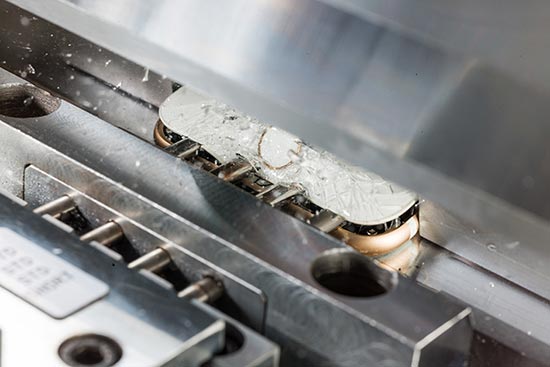
|
苹果的回收目标要想得以实现,必然还有一条很长的路要走,同时也需要行业各方的共同努力。杰克逊也表示,就连她自己,一开始也不相信全面回收是可行的。但在与工程师和其他团队成员交流后,她发现全面回收不仅是可行的,而且是极为必要的。她表示:“如果我们不花时间去做投资,确保硬件可以长期使用,材料可以再次利用,我们就会面临一个始终无法克服的难题。”(财富中文网) 本文另一版本登载于《财富》杂志2019年9月刊,标题为《未来,你的新手机将由旧手机制成》。 译者:朴成奎 |
It’s a long road that will require numerous parts of the industry to get on board if Apple’s goals are to be realized. Even Jackson says she wasn’t initially convinced it was doable. But after talking to engineers and team members, she came to see total recycling as not only possible but also vitally necessary. “If we don’t spend time investing in making sure the hardware is used for a long time and materials are reused,” she says, “it will be a problem we cannot surmount.” A version of this article appears as part of the Change the World package in the September 2019 issue of Fortune with the headline “Someday, Your New Phone Could Be Made From Your Old Phone.” |













